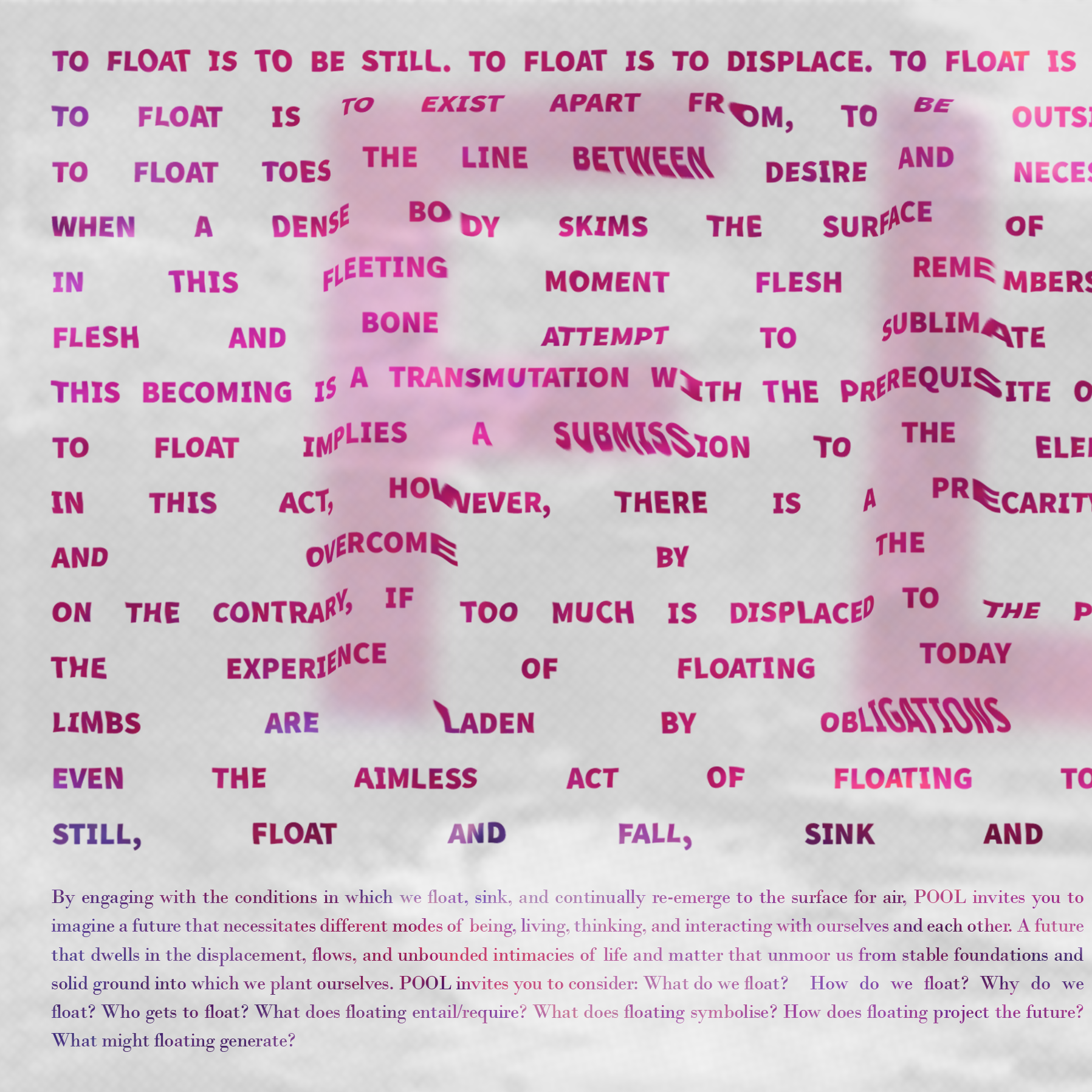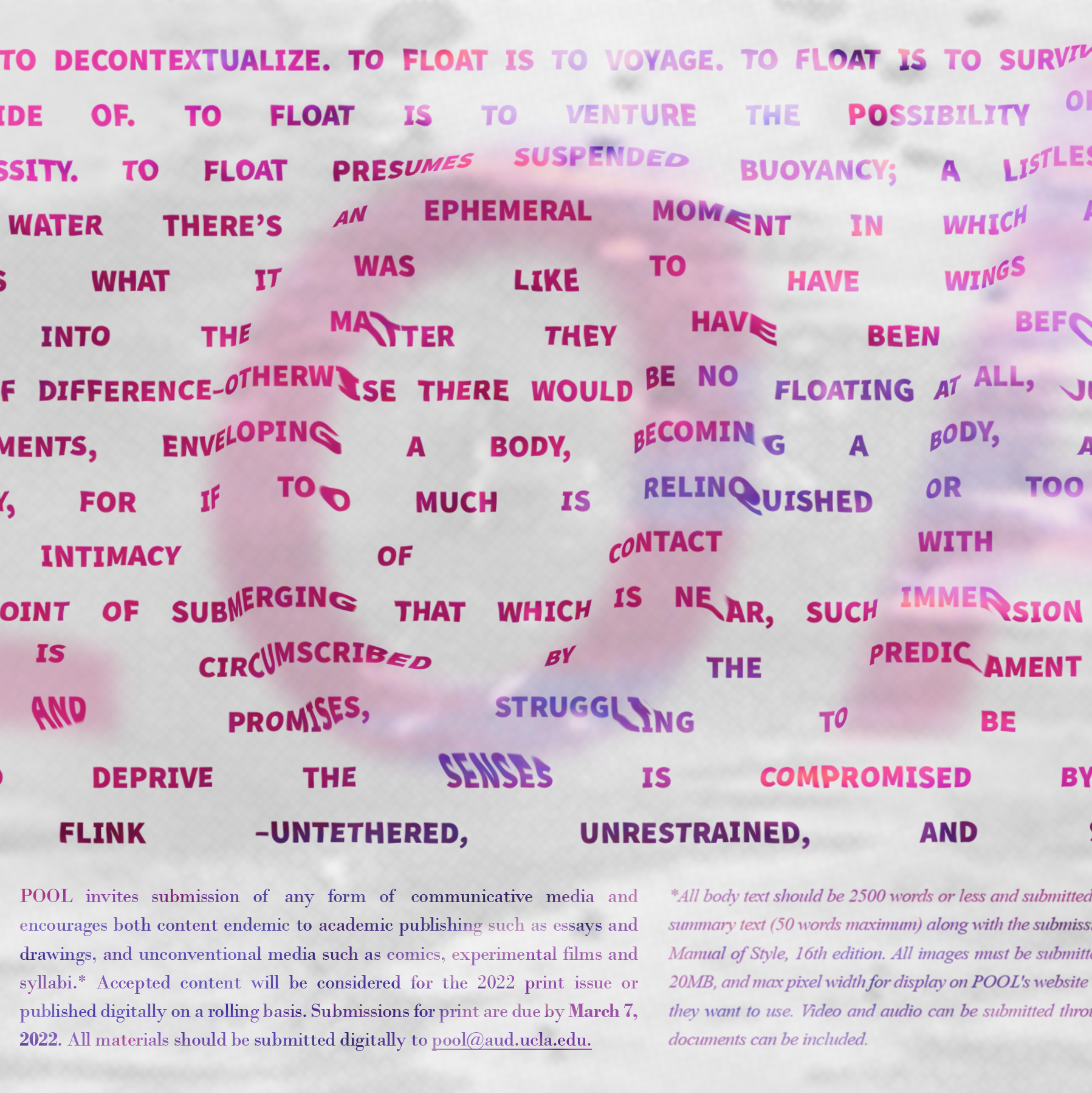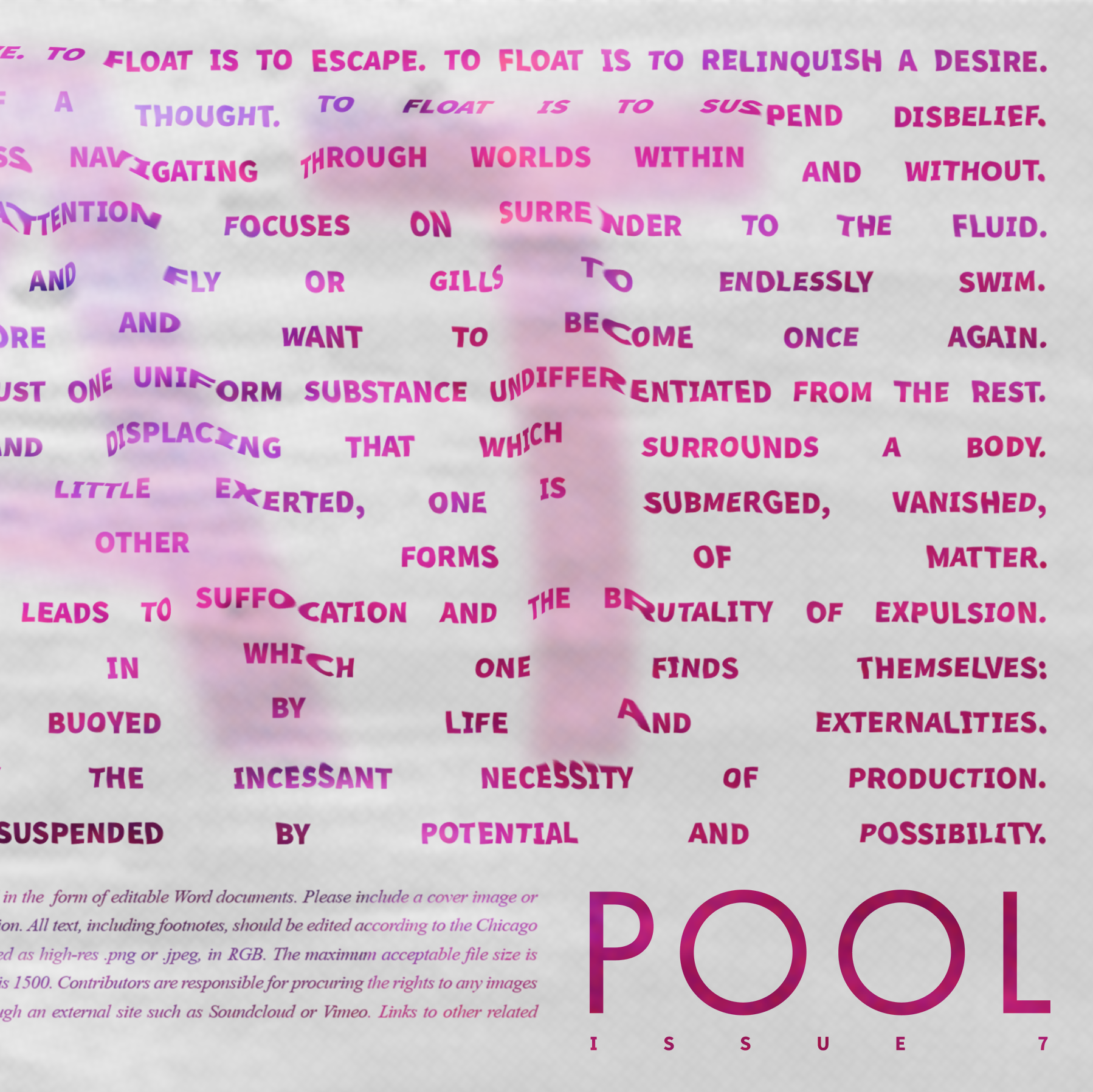Issue No. 7: Float
To float is to be still.
To float is to displace.
To float is to decontextualize.
To float is to voyage.
To float is to survive.
To float is to escape.
To float is to relinquish a desire.
To float is to exist apart from, to be outside of.
To float is to venture the possibility of a thought.
To float is to suspend disbelief.
To float toes the line between desire and necessity.
To float presumes suspended buoyancy; a listless navigating through worlds within and without. When a dense body skims the surface of water there’s an ephemeral moment in which attention focuses on surrender to the fluid. In this fleeting moment flesh remembers what it was like to have wings and fly or gills to endlessly swim. Flesh and bone attempt to sublimate into the matter they have been before and want to become once again. This becoming is a transmutation with the prerequisite of difference–otherwise there would be no floating at all, just one uniform substance undifferentiated from the rest. To float implies a submission to the elements enveloping a body, becoming a body, and displacing that which surrounds a body. In this act, however, there is a precarity, for if too much is relinquished or too little exerted, one is submerged, vanished, and overcome by the intimacy of contact with other forms of matter. On the contrary, if too much is displaced to the point of submerging that which is near, such immersion leads to suffocation and the brutality of expulsion. The experience of floating today is circumscribed by the predicament in which one finds themselves: limbs are laden by obligations and promises, struggling to be buoyed by life and externalities. Even the aimless act of floating to deprive the senses is compromised by the incessant necessity of production. Still, float and fall, sink and flink –untethered, unrestrained, and suspended by potential and possibility.



